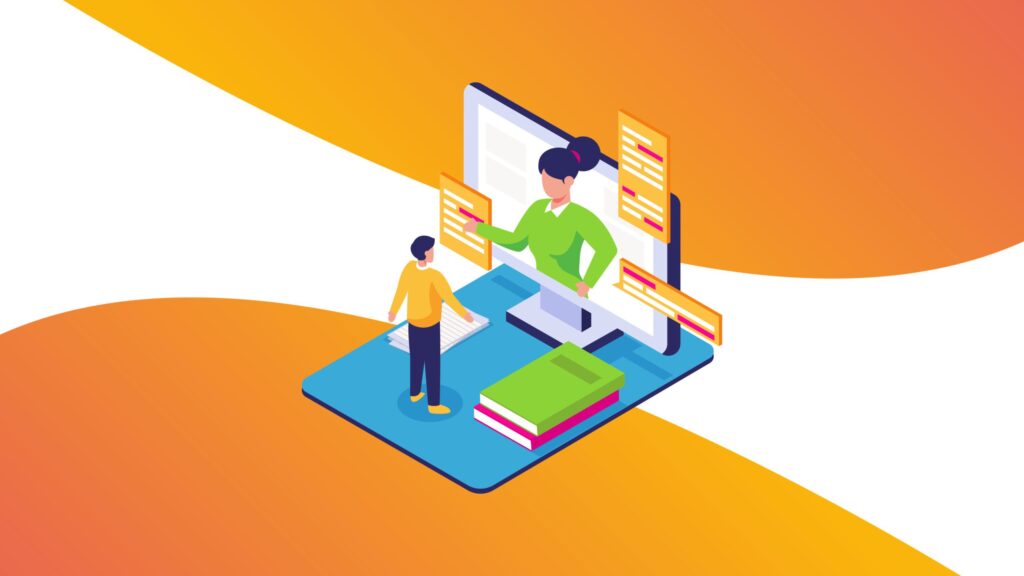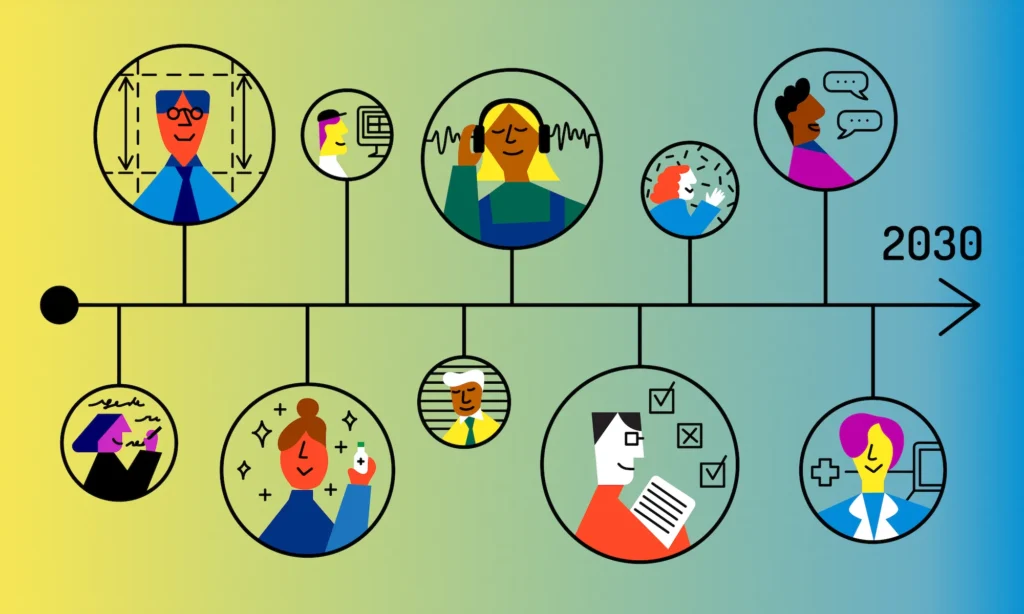
We offer a comprehensive curriculum developed by an international team, experienced teachers, and a focus on individualized and project-based learning.

We offer a comprehensive curriculum developed by an international team, experienced teachers, and a focus on individualized and project-based learning.

Education is undergoing a transformation, driven by rapid advancements in technology, shifting workforce demands, and evolving student needs. As we look ahead to 2025, understanding key education trends and predictions isn’t just insightful—it’s essential for educators, parents, policymakers, and education leaders. From the growing role of AI to the rise of personalized and flexible learning models, the focus is shifting toward innovative approaches that prioritize student engagement and real-world readiness. This article will explore the biggest changes shaping the sector, and how they create both challenges and opportunities for the future of learning.

As education progresses, personalized learning experiences are replacing traditional one-size-fits-all models. This approach ensures that every student learns at their own pace and in alignment with their unique strengths and needs. With the rise of digital tools and innovative teaching methods, it’s become increasingly feasible to cater to individual learning paths. Let’s explore the pivotal role of technology in this transformation and how real-world integration outside the classroom amplifies learning.
Technology has revolutionized personalized learning, enabling educators to adapt content and methods to suit each student’s specific requirements. At the heart of this transformation are artificial intelligence (AI) and machine learning (ML). These tools analyze student performance in real-time, identifying strengths, weaknesses, and optimal learning methodologies. This approach is particularly beneficial for diverse learners, including English language learners, as it allows for tailored educational experiences that address their unique needs.
For instance:
AI-driven adaptive learning platforms such as DreamBox and Khan Academy provide tailored lessons, adjusting in complexity as students progress.
Data analytics tools give educators insights into learning patterns, allowing timely and strategic interventions.
Gamified learning apps, like DuoLingo or Prodigy, increase engagement by offering personalized, interactive experiences.
Through these technologies, educators can abandon outdated models that treat all students the same, instead embracing dynamic lesson plans that evolve as students grow. Additionally, natural language processing (NLP) tools like chatbots are now used to offer on-demand support, creating a more interactive and student-led learning environment.
But what’s the result? Students become active participants in their education. They gain autonomy, which fosters critical thinking and ensures better retention of knowledge. By prioritizing the individual over the collective, technology is reshaping educational models to fit varied learning styles.
Personalized learning doesn’t stop with a textbook or a screen. It extends into experiences that focus on application—a concept that’s redefining education to prepare students for life beyond school. This is particularly relevant for college students, who face unique challenges in today’s educational landscape. These strategies aim to bridge theory with practice, ensuring students develop skills employers value and society demands.
Key strategies include:
Internships and Apprenticeships: Organizations often partner with schools to provide hands-on, industry-specific experience. Programs like these let students explore potential career paths while gaining practical knowledge they can’t get from a classroom alone.
Independent Projects: By allowing students to work on self-directed projects, schools encourage curiosity and ownership of learning. Whether it’s coding a simple app or conducting a research project, these initiatives build problem-solving skills and creativity.
Community-Centered Projects: Schools are integrating community engagement initiatives, like volunteering or local advocacy. Not only does this teach empathy, but it instills a broader understanding of socio-economic and cultural dynamics.
Hybrid Models: Flexibility in learning is becoming the norm with the rise of hybrid setups that combine virtual learning, in-person modules, and experiential internships. Programs like these are especially effective in professional fields such as healthcare and engineering.
Real-world learning pathways complement personalized learning by situating education in meaningful, practical contexts. They provide students with tools to navigate complexities, adapt to challenges, and develop confidence in their abilities. Unlike traditional education, which often focuses exclusively on academic success, this approach makes education holistic by blending knowledge with application.
By combining technology’s adaptive teaching capabilities with real-world experiences, personalized learning is painting a future where education is not just about passing exams but about preparing students to thrive in dynamic environments. This evolution is among the most pivotal education trends and predictions for the coming years. Every learner gets what they need, and education, as a whole, becomes more impactful and inclusive.

Higher education institutions are integrating artificial intelligence (AI) into education, reshaping how students learn and how teachers teach. As schools and universities adopt digital solutions, AI stands at the forefront, acting as both a tool and a transformative force. From personalized learning paths to ethical concerns, AI’s role in education is becoming increasingly significant.
AI-driven tools are revolutionizing learning experiences by fostering inquiry-based learning and tailoring teaching methods to individual needs. Gone are the days of standardized approaches. Today, AI enables students to explore areas of personal interest at their own pace and with greater depth.
Key AI tools making a difference include:
Adaptive Learning Software
Platforms like DreamBox or Smart Sparrow use AI to adjust lesson difficulty based on a student’s performance. This ensures students stay challenged without feeling overwhelmed, providing timely feedback along the way.
AI-Powered Tutors
Virtual assistants like Squirrel AI or Carnegie Learning deliver on-demand guidance, simulating the experience of one-on-one tutoring. These tools are particularly useful in STEM education, helping students tackle complex problems with instant, step-by-step support.
Personalized Quiz and Assessment Tools
AI automates the creation of custom quizzes tailored to a student’s learning progress. By identifying gaps in knowledge, tools like Quizlet’s AI-based system refine study plans to improve retention and performance.
Natural Language Processing for Research
Apps like Grammarly and Research Rabbit assist students in refining research and writing, offering suggestions and helping them better understand academic topics.
These tools don’t just enhance learning; they empower students to take charge of their education. With personalized feedback and support, students build confidence and gain mastery in subjects that align with their interests.
While AI in education offers many benefits, it also raises critical questions about ethics and equity. Who gets access to these life-changing tools? How can we ensure they’re used responsibly? These challenges are as important as the technology itself.
Potential Inequalities
AI-enhanced learning often requires advanced devices, high-speed internet, and other resources. Many schools, especially in rural or underserved communities, lack the infrastructure to implement AI effectively. This creates a divide between students who benefit from cutting-edge tools and those who don’t, widening the educational inequality gap.
Bias in Algorithms
AI systems often carry implicit biases, reflecting the data used to train them. If the training data lacks diversity or reinforces stereotypes, the AI tools risk perpetuating inequalities in education. For instance, an AI-powered grading tool might unintentionally favor students with writing styles aligning with majority norms.
Ethical Considerations
Privacy is another significant concern. AI collects and processes vast amounts of data, from learning habits to personal information. Without robust protections, this data could be misused or exploited. Education systems must adopt strict guidelines to safeguard student privacy and ensure AI use aligns with ethical standards.
For AI to truly transform education, stakeholders must focus on ensuring responsible implementation. Governments and educational institutions need to:
Provide equal access to AI tools by investing in technology for underserved communities.
Collaborate with experts to minimize algorithmic biases and improve fairness.
Educate both teachers and students on the significance of AI, its capabilities, and its ethical implications.
Ensure that data privacy laws align with the fast-paced adoption of AI in classrooms.
By addressing these challenges, we can build systems where AI doesn’t just enhance education but also ensures it’s equitable and ethical for all.

Blended and flexible learning models are becoming foundational pillars of modern education, providing an alternative to traditional classrooms. By combining traditional in-person teaching with digital tools and platforms, these models cater to diverse learning needs and offer tailored solutions that fit both students’ lifestyles and learning preferences. Whether it’s a high school student balancing extracurricular activities or a professional seeking career growth, blended learning creates opportunities for everyone.
Hybrid learning merges online coursework with in-person engagement, offering a balance that suits different educational settings—from K-12 to higher education and corporate training. Its flexibility and accessibility make it one of the most promising education trends for the future.
Here’s how hybrid learning stands out:
Flexibility in Learning Schedules: Online components allow students to learn at their own pace and revisit materials as needed. For instance, recorded lectures and digital resources ensure that no one is left behind—even if they miss a class.
Remote and Inclusive Accessibility: Students in remote regions or with disabilities gain access to high-quality education resources without the need to physically attend every class session. This bridges gaps that traditional models fail to address.
Increased Engagement Levels: Blended formats often integrate interactive tools such as quizzes, discussion boards, and gamified platforms that keep learners motivated, fostering a deeper connection with the content.
Personalized Learning Paths: With access to both in-person guidance and online resources, students can tailor their educational journey to their own strengths and interests while still receiving the support of a structured classroom environment.
Improved Teacher-Student Interaction: Online platforms offer real-time performance tracking, enabling teachers to provide individualized attention. Meanwhile, face-to-face sessions focus on collaborative or hands-on activities.
By blending the best of both worlds, hybrid models adapt to today’s fast-evolving educational requirements, ensuring that students are prepared for both academic and real-world challenges.
While the potential of blended learning is vast, its implementation isn’t without hurdles. From technological barriers to ensuring equitable access, schools and institutions need to proactively address these challenges to maximize impact.
One of the most pressing concerns is the digital divide, where unequal access to technology and internet connectivity leaves some students at a disadvantage. Without the necessary resources, blended learning fails to achieve its inclusive promise.
Solutions include:
Device Distribution Initiatives: Schools and governments can provide laptops or tablets to students who lack them, ensuring no one is left out of online learning opportunities.
Community Wi-Fi Access: Collaborating with local businesses and libraries to create free Wi-Fi hotspots in underserved areas can help bridge connectivity gaps.
Low-Bandwidth Solutions: Platforms designed to work efficiently on slower connections can help students in rural areas access the same quality of education as their urban counterparts.
Access to devices isn’t enough if students and educators lack the skills to use them effectively. Some educators may feel overwhelmed by new technologies, while students without prior exposure might struggle to navigate online platforms.
Potential remedies include:
Targeted Tech Training: Offering workshops to improve teachers’ and students’ digital literacy ensures everyone is equipped to engage in blended formats effectively.
User-Friendly Platforms: Leveraging tools with simple, intuitive interfaces helps reduce learning curves and encourages participation from all students.
Without proper planning, online components of blended learning may feel detached or unengaging, potentially causing students to lose focus. Institutions need to reimagine how they deliver digital content to keep students motivated.
Strategies to drive engagement include:
Gamification Elements: Adding points, badges, and leaderboards to learning modules can make online participation more interactive and rewarding.
Interactive Content: Embedding features such as live polls, quizzes, and discussion forums encourages active participation and minimizes passivity.
Consistent Feedback: Providing real-time updates on progress ensures students feel supported and guided throughout their learning journey.
Adopting blended learning models can strain budgets due to costs associated with digital infrastructure and ongoing maintenance. Institutions need to maximize ROI and ensure long-term sustainability.
Consider these approaches:
Partnership Opportunities: Collaborating with tech companies to secure discounts or pilot programs can provide cost-effective access to essential tools.
Scalable Solutions: Cloud-based learning management systems (LMS) reduce infrastructure requirements while allowing schools to scale their efforts efficiently.
By addressing these challenges head-on, educators can create equitable, engaging, and sustainable blended learning environments that work for all.
Blended and flexible learning is not just a temporary fix—it represents a shift to a more adaptable, inclusive way of teaching that will undoubtedly play a significant role in shaping the future of education.

The future of work is changing rapidly, driven by advancements in technology and shifting employer priorities. As automation and artificial intelligence take over routine tasks, the skills in demand are evolving. Education systems are beginning to reflect this new reality, moving away from traditional models and focusing on what will truly prepare students for the jobs of tomorrow. Let’s explore two key areas shaping the conversation: the development of essential soft skills and the rise of non-degree career pathways.
The days when hard technical skills alone could secure a job are fading. Today, employers are prioritizing soft skills like communication, adaptability, and teamwork. Why? Because these skills enable individuals to navigate uncertainty, collaborate effectively, and solve complex problems—areas that automation can’t easily handle.
Key soft skills expected to dominate future job markets include:
Critical Thinking and Problem-Solving
Individuals who can assess situations, think creatively, and make data-driven decisions are highly sought after.
Emotional Intelligence
The ability to understand and manage emotions—both your own and others’—enhances team collaboration and client relationships.
Adaptability and Resilience
As industries evolve, so must workers. Employees who can pivot with change, learn quickly, and overcome challenges are invaluable.
Effective Communication
Clear articulation of ideas, active listening, and persuasive skills are crucial as businesses grow increasingly global and diverse.
How are schools addressing these needs? Many institutions are integrating project-based learning into their curriculum, allowing students to build collaborative and interpersonal skills through real-world scenarios. Additionally, tools like role-playing simulators and team-centered platforms are helping students actively practice communication and emotional intelligence in practical settings. Without these skills, it’s becoming harder to succeed in a world where human connection and adaptability are prized as much as technical expertise.
A college degree is no longer the only—or even the best—route to a successful career. As employer priorities shift, alternative credentials like micro-degrees, certifications, and boot camps have gained traction. These non-degree options focus on teaching specific, job-relevant skills and are tailored to meet employer demands more efficiently than traditional four-year programs.
Why are non-degree pathways rising in importance?
Cost and Time Efficiency
A certification program or coding boot camp often takes weeks or months, compared to years for a degree. This makes these options more accessible and cost-effective for many learners.
Alignment with Industry Needs
Many non-degree programs are co-designed by employers, ensuring that what students learn directly translates to the job market. For example, platforms like Coursera and Udemy partner with major companies to offer programs in data analysis, digital marketing, and AI.
Lifelong Learning
Workers can update their skills as needed, keeping pace with technological advancements and shifting roles. This modular approach allows continuous learning rather than front-loading education early in life.
Some of the most in-demand certifications include:
Tech Skills: Certifications in cybersecurity, cloud computing (e.g., AWS, Azure), and programming languages like Python.
Business Skills: Project management certifications, such as PMP or Agile Scrum credentials.
Creative Fields: Design-related certificates, like those in Adobe Creative Suite or UX/UI design, are also on the rise.
Educational institutions are also beginning to recognize the value of non-degree pathways, integrating them within their offerings or promoting partnerships with industry leaders. As a result, students have the flexibility to pursue paths that align with their goals while avoiding the one-size-fits-all approach of traditional systems.
By shifting focus to soft skills and embracing non-degree career pathways, educational systems are adapting to meet the demands of an ever-changing workforce. This two-pronged approach holds the key to preparing students for a future where adaptability and specific expertise matter more than traditional markers of success.

As education becomes increasingly reliant on digital tools and online platforms, the importance of cybersecurity has risen dramatically. Implementing robust cybersecurity measures can empower teachers by creating a safer digital environment, reducing their stress, and allowing them to focus more on teaching. Schools, universities, and educational institutions store a wealth of sensitive data, from student records to proprietary research. Unfortunately, this makes them prime targets for sophisticated cyberattacks like ransomware, phishing, and unauthorized data breaches. Ensuring digital safety is not just a technical task but a critical responsibility that involves everyone—educators, students, administrators, and policymakers.
Educational institutions house a treasure trove of sensitive data, from student grades and medical records to financial information and staff credentials. The volume and sensitivity of this data make schools a beacon for cybercriminals seeking financial gain or to disrupt operations. To counter these threats, schools must adopt robust methods to secure their networks and data systems.
Some highly effective methods include:
Data Encryption: Encrypting data ensures that even if hackers access it, the information is unreadable without a decryption key. Modern encryption protocols protect sensitive records during transfer and storage.
Network Segmentation: By dividing a network into smaller, isolated segments, institutions can limit the damage a cyberattack can cause. For example, student records might reside on a separate network from administrative operations, keeping sensitive data safe even if one segment is compromised.
Multi-Factor Authentication (MFA): Using MFA adds an essential layer of protection beyond standard usernames and passwords. It requires multiple verification methods, like a password and a mobile-authenticated code.
Cloud-Based Security Solutions: Schools increasingly rely on cloud services, making robust cloud security essential. Measures like automated threat detection, built-in encryption, and access control systems help protect information stored and shared online.
Regular Security Audits: Routine audits help identify and fix vulnerabilities before attackers exploit them, ensuring the system stays resilient against evolving threats. Schools should also run penetration tests to mimic potential attacks and pinpoint weaknesses.
Educational institutions often operate on tight budgets with limited IT resources, which can make comprehensive security measures challenging. However, even small but focused investments in cybersecurity—like centralized monitoring systems or proper endpoint protection—can go a long way in mitigating the risks.
In addition to protecting data systems, schools have a critical role to play in fostering cybersecurity awareness within their communities—especially among students. The education sector is unique because students, as frequent users of online tools, often represent a vulnerability themselves. Without proper training, they can unknowingly fall for phishing scams, use weak passwords, or share sensitive information carelessly.
What can schools do to build cybersecurity literacy?
Introduce Cybersecurity Courses and Programs
Schools can integrate basic cybersecurity education into curricula, starting as early as middle school. Lessons on identifying phishing emails, avoiding malicious links, and safely navigating the internet prepare students to protect themselves and their school systems.
Teach the Value of Strong Passwords
Students often use the same easy-to-guess passwords across multiple platforms. By teaching them how to create strong, unique passwords and encouraging password management tools, schools can significantly reduce the risk of unauthorized access.
Promote Safe Social Media Practices
With the rise of social media platforms, schools can teach students how to protect their privacy and avoid oversharing personal information, which hackers can use for social engineering attacks.
Conduct Real-World Simulations
Running mock phishing campaigns or cybersecurity exercises helps students identify potential threats in a low-risk environment. Hands-on experience is often the best way to build awareness and confidence.
Encourage Accountability
Educators should instill a culture of responsibility among students. Simple actions like logging out of shared devices, avoiding public Wi-Fi for sensitive tasks, and reporting suspicious activity can dramatically improve overall security.
Empowering students with cybersecurity literacy gives them tools to act as the first line of defense in keeping educational systems safe. It also prepares them for a digital-first world, where the ability to navigate online risks will be as critical as any academic skill.
By prioritizing both robust security measures and cybersecurity education, schools can protect sensitive information while empowering students to actively contribute to a safe digital environment. This dual approach is essential for the future of education in an increasingly connected world.

Teacher wellbeing is a cornerstone of a thriving educational environment. When teachers feel supported and valued, they are more likely to deliver high-quality education and foster a positive learning environment. Research consistently shows that teacher wellbeing is directly linked to improved student outcomes, higher job satisfaction, and reduced turnover rates.
To support teachers’ wellbeing, schools can implement several effective strategies:
Access to Mental Health Resources: Providing teachers with access to mental health resources and counseling services can help them manage stress and maintain their mental health.
Work-Life Balance: Encouraging a healthy work-life balance through flexible scheduling and reasonable workloads ensures that teachers can recharge and bring their best selves to the classroom.
Professional Development: Offering professional development opportunities focused on stress management, self-care, and personal growth empowers teachers to handle the demands of their profession.
Positive School Culture: Fostering a collaborative and supportive school culture where teachers feel valued and recognized for their hard work can significantly boost morale.
Recognition and Rewards: Implementing systems to recognize and reward teachers for their dedication and achievements can enhance job satisfaction and motivation.
By prioritizing teacher wellbeing, schools create a nurturing learning environment that benefits both educators and students. When teachers are at their best, they can inspire and guide their students more effectively, leading to greater student success.
In today’s fast-paced and ever-changing education landscape, school leaders must adopt a proactive approach to drive student success and navigate the complexities of the education system. Proactive leadership involves anticipating challenges, staying informed about education trends, and maintaining a clear vision for the future.
Here are some strategies for leading proactively:
Stay Informed: Keeping up-to-date with the latest education trends, research, and best practices allows school leaders to make informed decisions that benefit their schools.
Build Strong Relationships: Establishing strong relationships with teachers, students, and parents fosters a sense of community and trust, which is essential for a supportive learning environment.
Encourage Collaboration: Promoting collaboration and open communication among staff and stakeholders ensures that everyone is working towards common goals and can share innovative ideas.
Foster Innovation: Creating a culture of innovation and experimentation encourages teachers and students to explore new methods and technologies that can enhance learning experiences.
Prioritize Student-Centered Learning: Focusing on personalized education and student-centered learning ensures that each student’s unique needs and strengths are addressed, leading to better student engagement and success.
By leading proactively, school leaders can create a dynamic and supportive learning environment that empowers students to thrive. This approach not only addresses immediate challenges but also sets the foundation for long-term success in the ever-evolving education system.
Effective school leadership and strategic planning are essential for creating a learning environment where both students and teachers can excel. School leaders must balance day-to-day management with long-term vision, ensuring that their strategies align with the overarching goals of the education system.
The future of education is being shaped by unprecedented changes, from personalized learning models to the integration of AI and the rise of non-degree pathways. These trends emphasize a shift toward adaptability, inclusivity, and real-world readiness, preparing students for a dynamic and technology-driven workforce while ultimately aiming to educate children.
As these changes unfold, it’s essential for educators, policymakers, and learners to stay informed and proactive. Embracing innovation, addressing challenges like equity and cybersecurity, and fostering lifelong learning will ensure education systems remain impactful and relevant.
The journey forward is an opportunity to rethink how we teach and learn. What actions will you take to prepare for these exciting shifts?

FutureClassroom is Southeast Asia's largest coding platform for K-12, empowering students with essential skills in Web Development, Game Development, Python, and AI. Aligned with Cambridge and Pearson standards, our platform combines interactive learning and real-world projects to prepare young learners for a future driven by technology.
View all posts
FutureClassroom is Southeast Asia's largest coding platform for K-12, empowering students with essential skills in Web Development, Game Development, Python, and AI. Aligned with Cambridge and Pearson standards, our platform combines interactive learning and real-world projects to prepare young learners for a future driven by technology.
Get all the latest information, support and guidance about the cost of living with kindergarten.
Start Registration